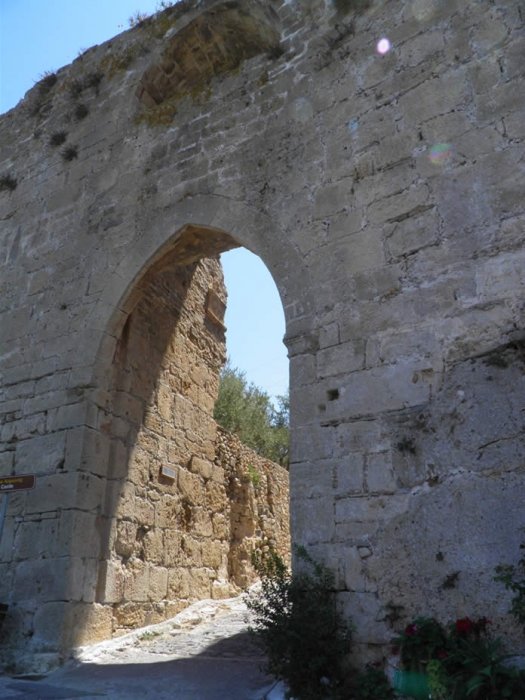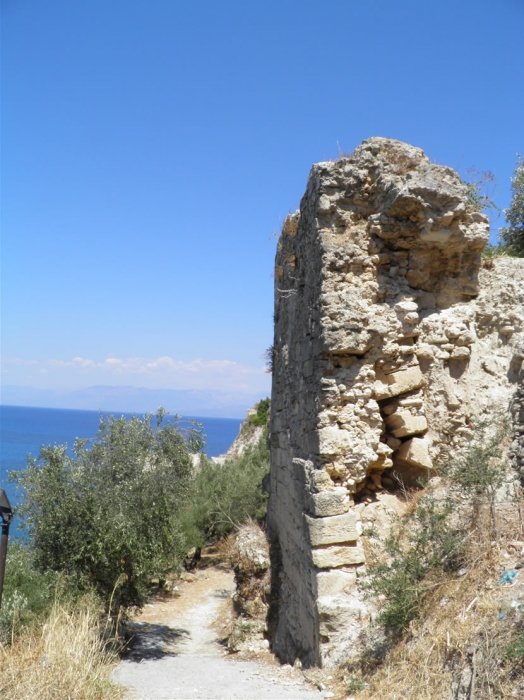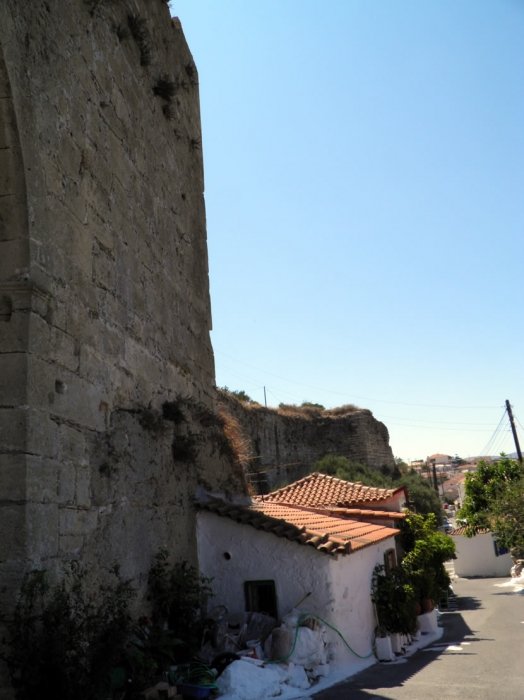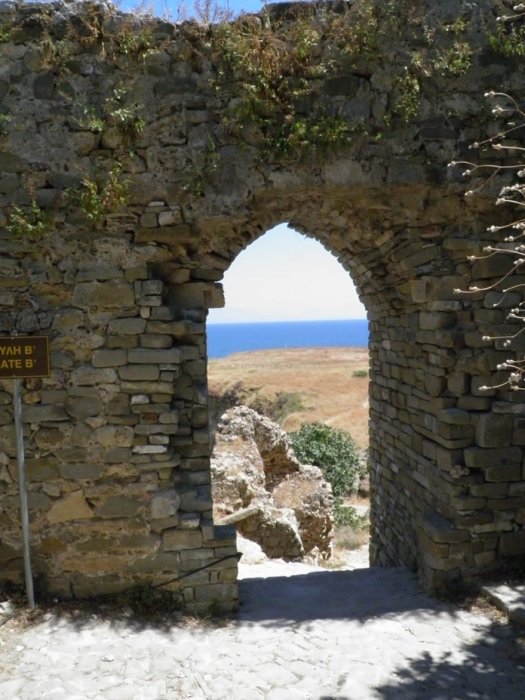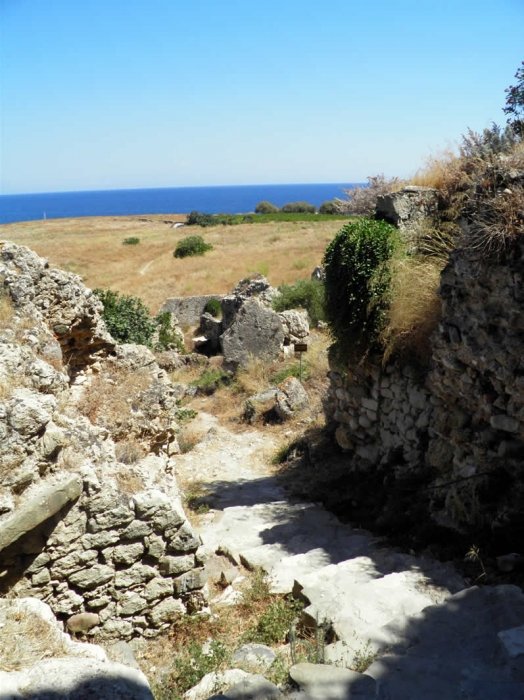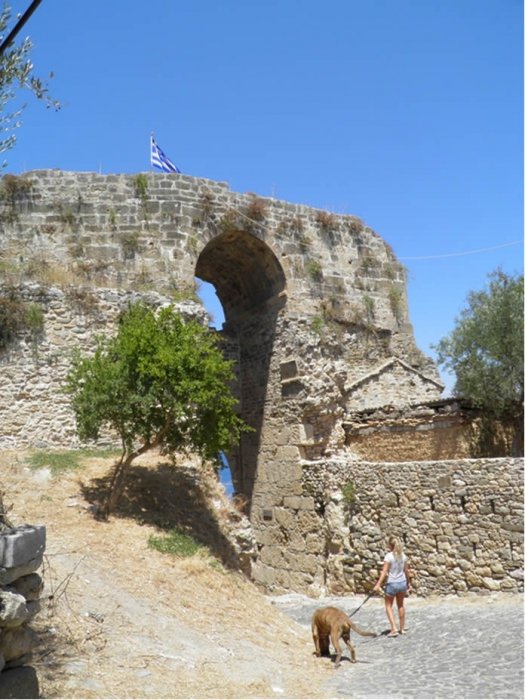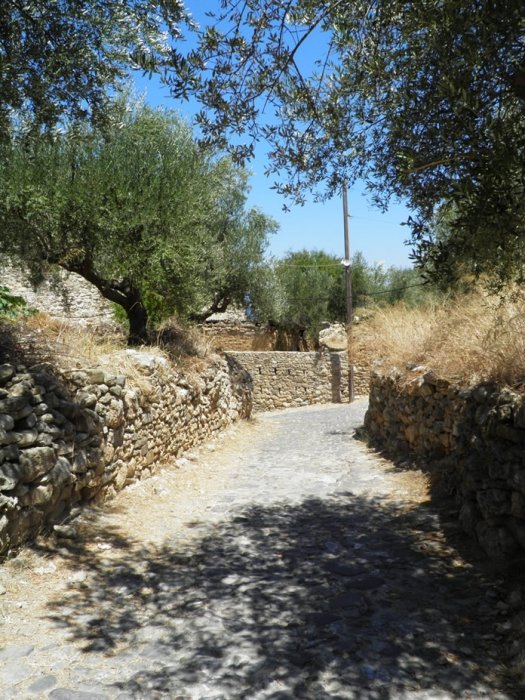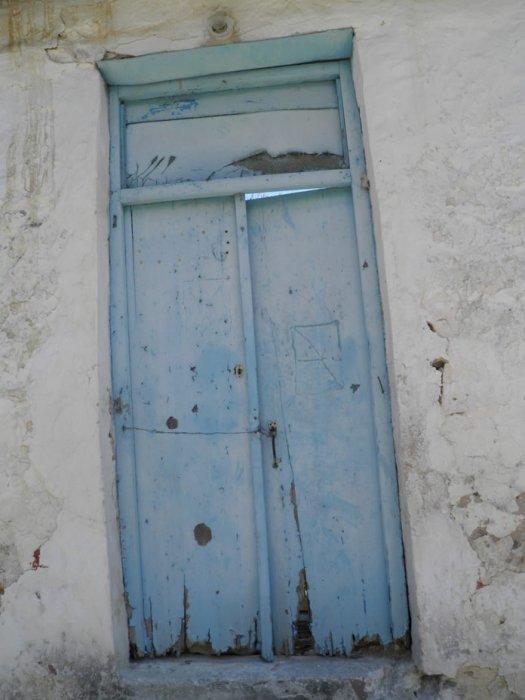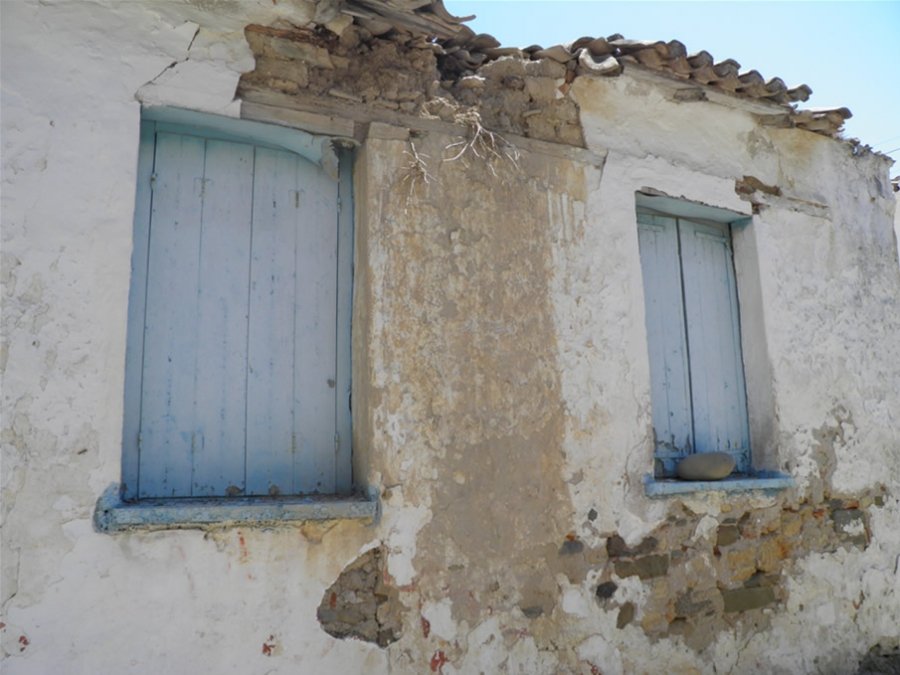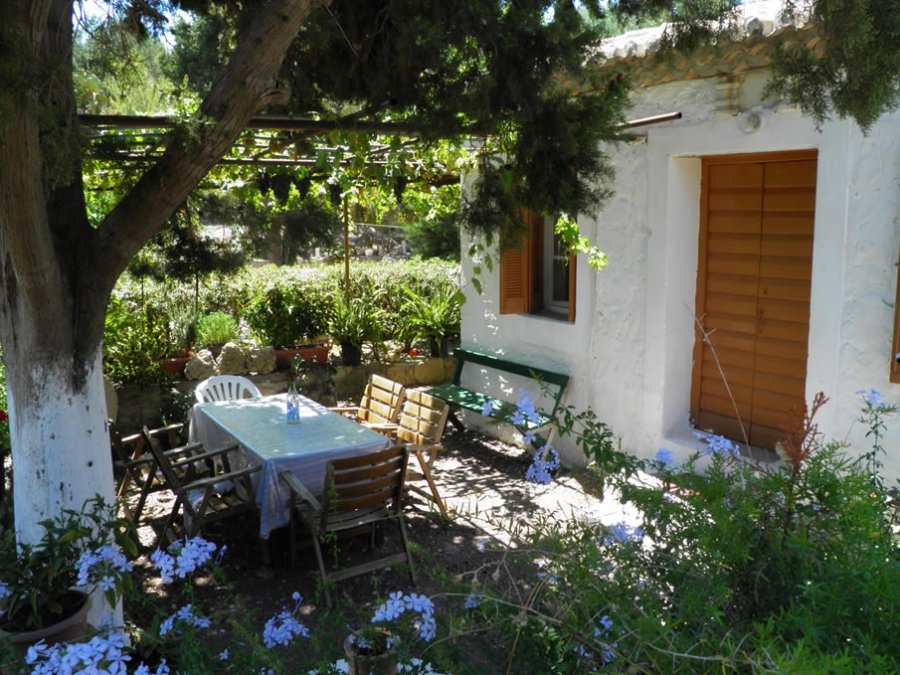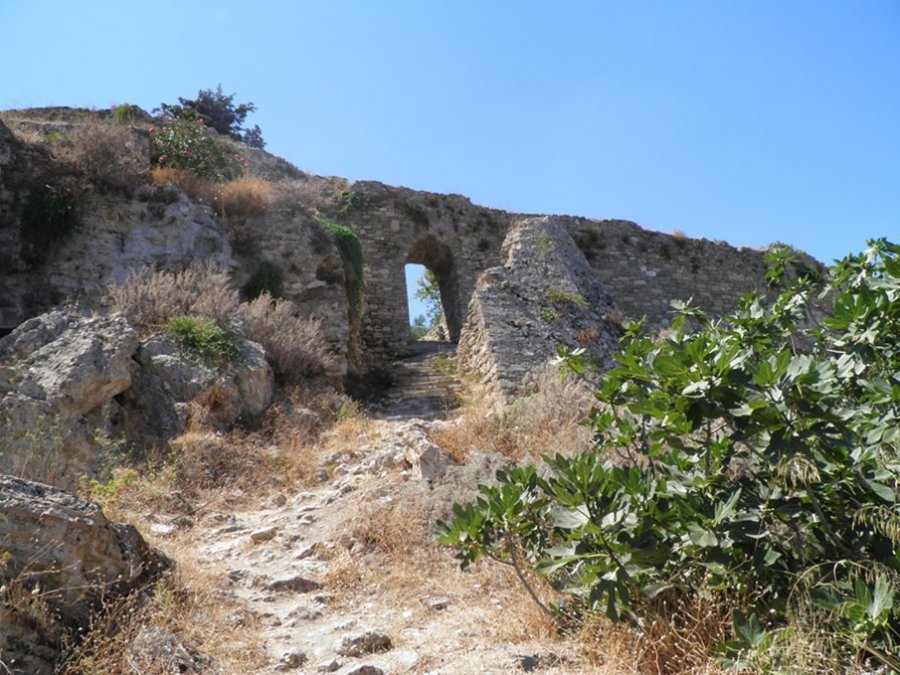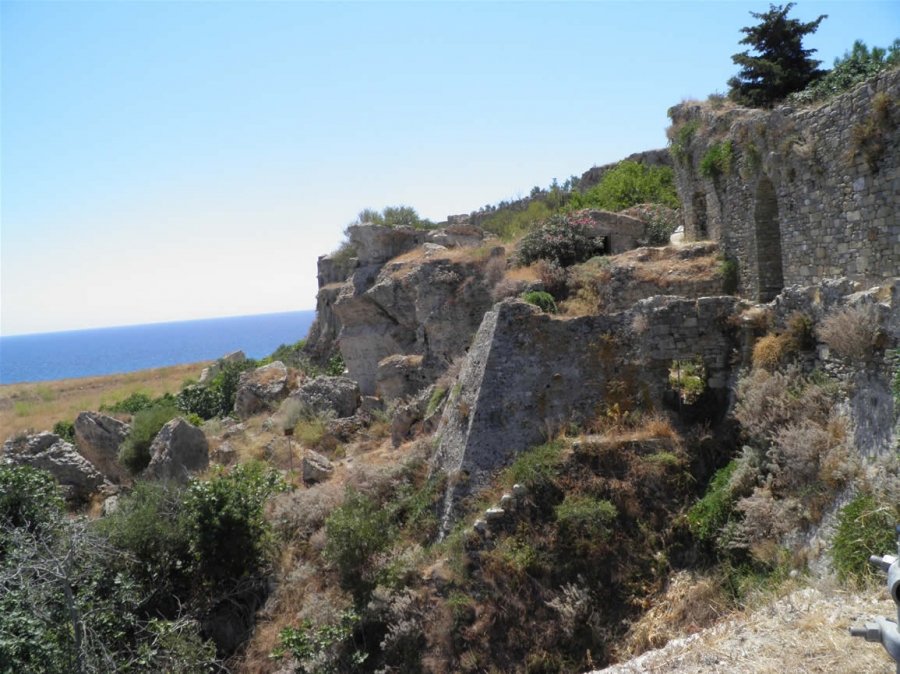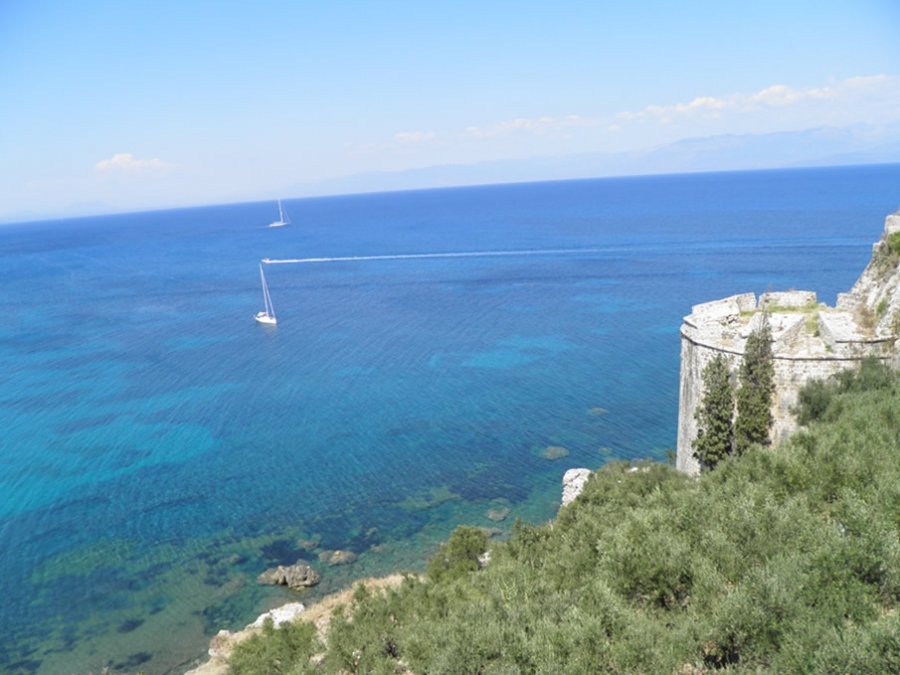The castle of Koroni along with its castled sister-city Methoni constitutes a prime example of the presence of hegemonic powers in mainland Greece during Prehistory. Large fortifications and walls, high ramparts and built cannons offered protection not only from the pirates but also from the rival armies.
The fortress of Koroni is the only one which is still inhabited in recent days. As you enter Koroni, driving in its narrow streets and heading to the beach which is found in the end of the main road, the robust fortification will definitely catch your eye. The huge rampart almost reaches the level of the sea and the upper part of the big gate is also visible. As you are entering the castle, you will certainly notice the fields and the houses which are spreading on your left. You will also view the abundance of stone yards with their cobbled floors and the olive grove; all nicely tied in the landscape. If you turn left at the first alley, you will head towards Gate B which leads to the beach (it is worth visiting the beach – the fresh waters really cooled us off in a hot afternoon of August), but also to a large opening that you will see on your right hand.
The region of Koroni bears a long history. This is straightforwardly perceivable if one stares at the old buildings, the remains inside the castle and the temple of Apollo where the visitor can easily see the remains of an older paleochristian basilica. If you find yourself there, you will see the little columns from the base of the ancient temple which are a manifestation of its existence on the site. Nonetheless, this is how it generally happens with the ancient temples which are being built on top of the remains of older ones and are usually interrelated with the prevailing religion of each time. Right next to the remains of this ancient temple, there is the temple of Agia Sophia. In the same area, a few hundred feet farther, you will also see the temple of Agios Charalambos which was built in the 17th century.

